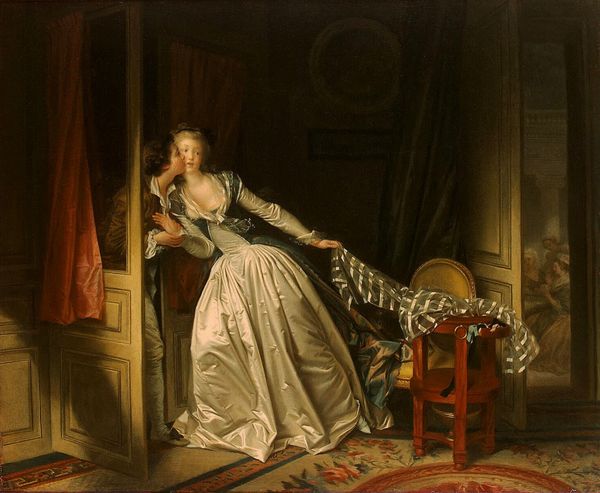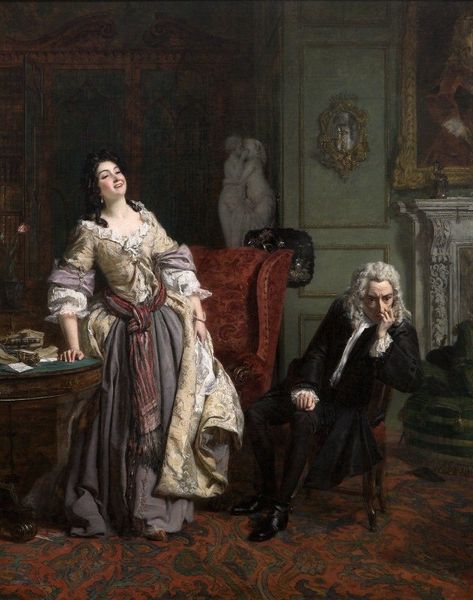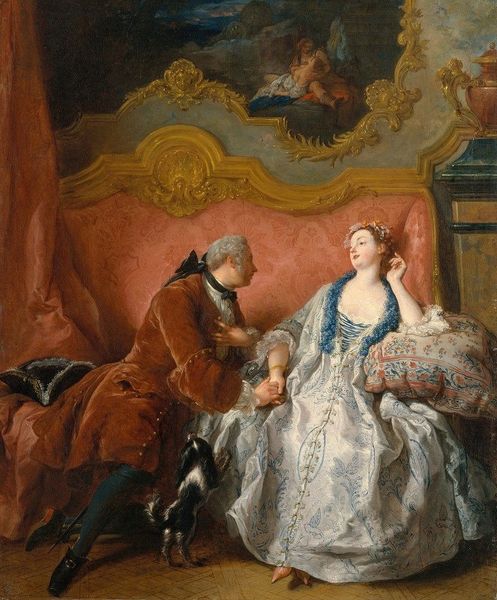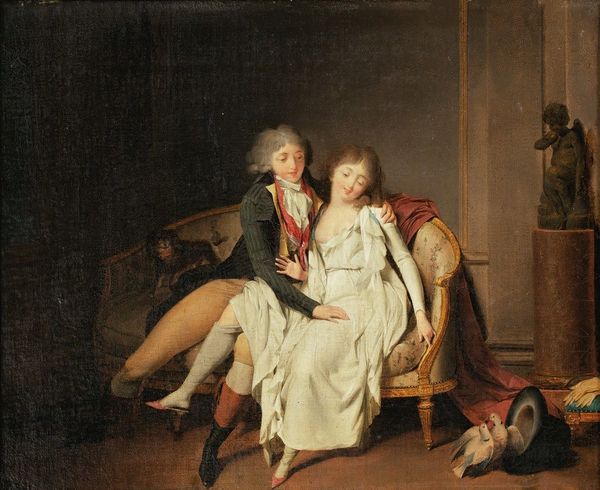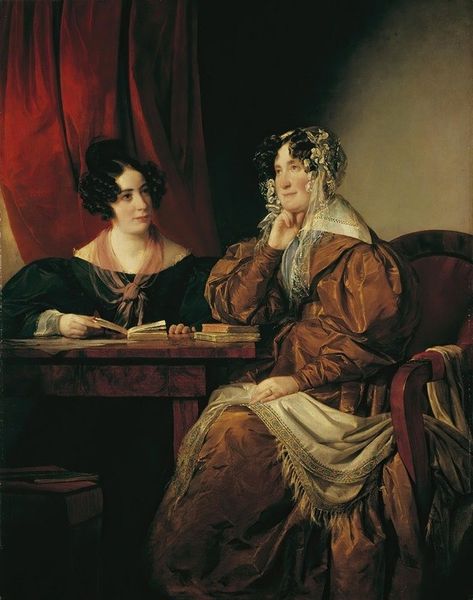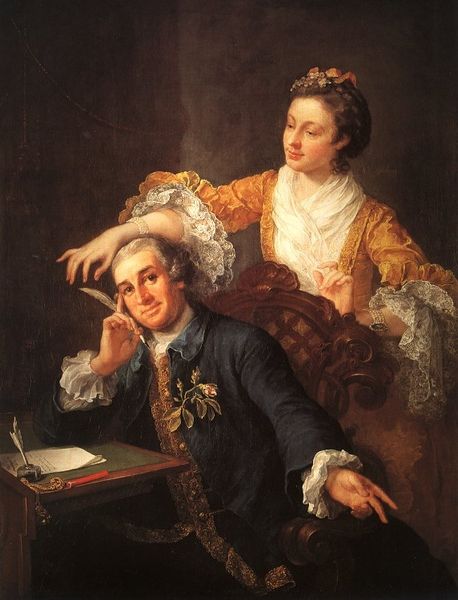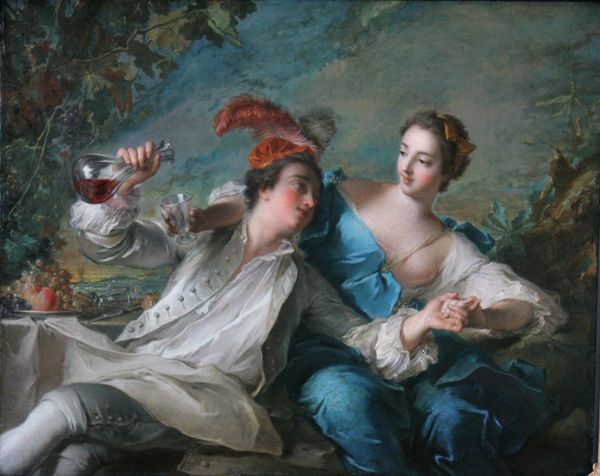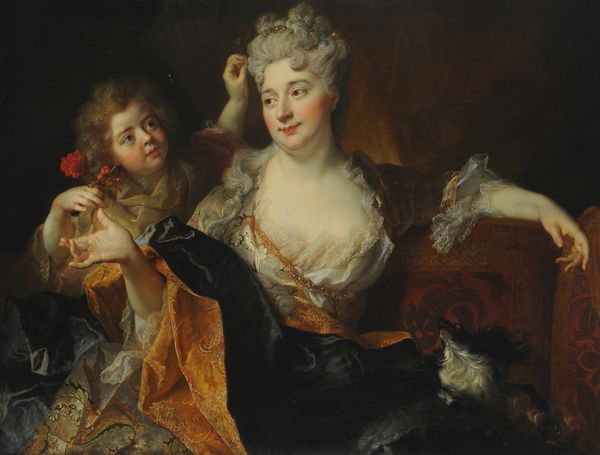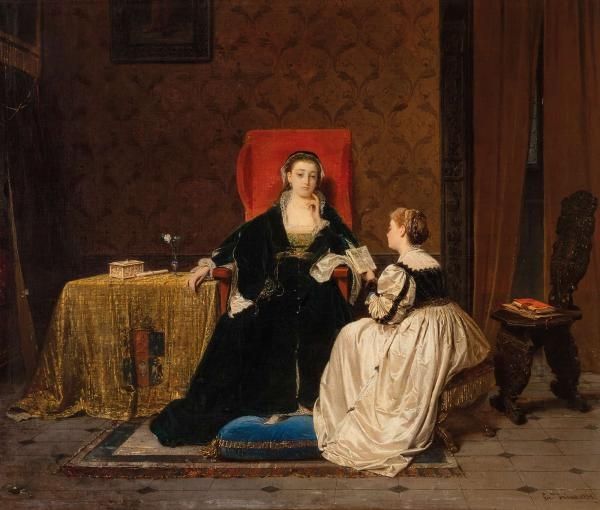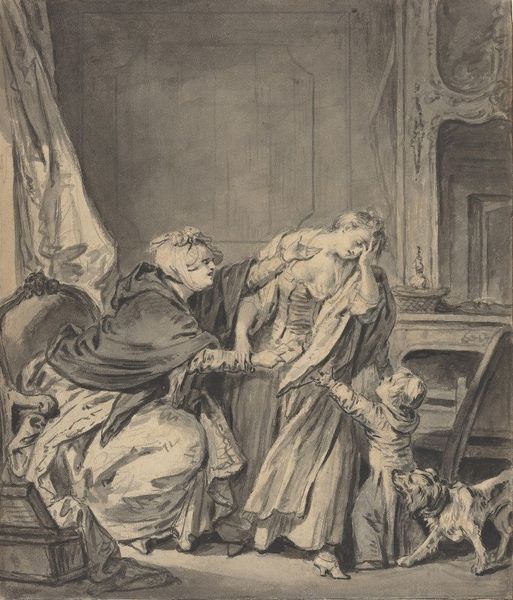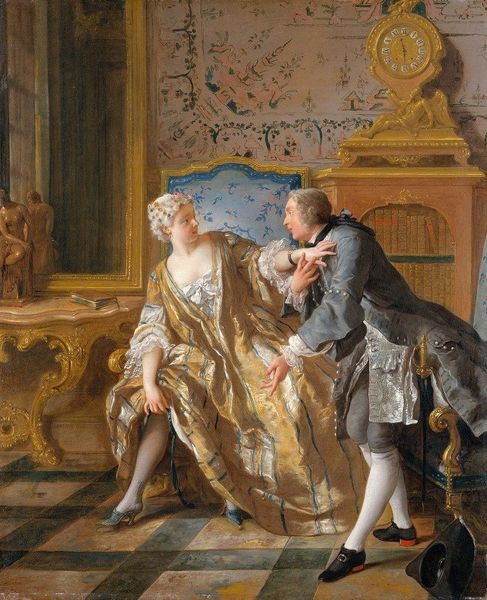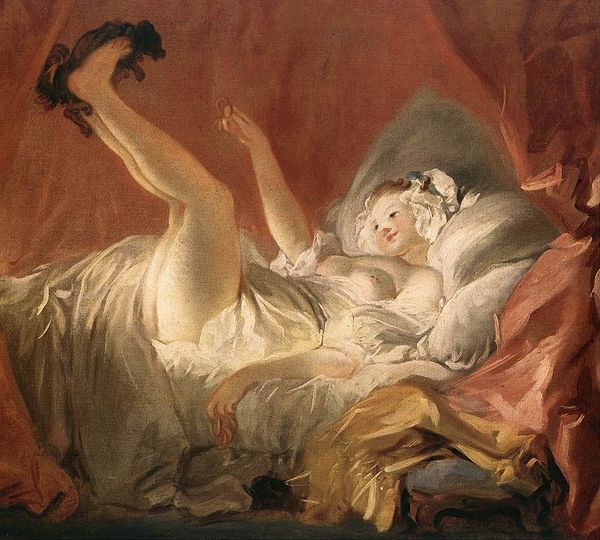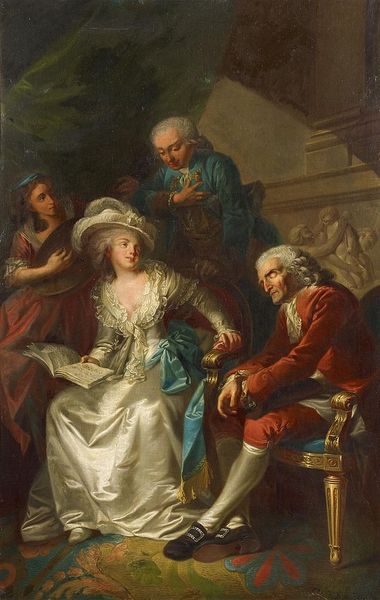
Copyright: Public domain
Curator: Barbara Krafft painted this scene in 1797, calling it "Franz De Paula Hrabě Hartig a Jeho Manželka Eleonora Jako Caritas Romana," or, translated, "Franz De Paula Hrabě Hartig and His Wife Eleonora as Roman Charity." It’s rendered in oil paint. Editor: My initial impression is one of slight unease, maybe even morbid fascination. The color palette feels muted, dominated by somber greens and browns. Is that supposed to be… Roman Charity? Curator: Yes, and this work offers a striking visual representation of the Caritas Romana story. The tale, retold through centuries, is of a daughter, Pero, who secretly breastfeeds her imprisoned father, Cimon, condemned to death by starvation. This tale symbolizes familial duty, sacrifice, and even survival against the state’s cruelty. Editor: Hmm. Well, observing the painting strictly from a formalist point of view, the contrasting textures are quite striking. Look at the rough impasto of the drapery, versus the smoother rendering of skin, particularly in the female figure’s exposed breast. And how the stripes of the nobleman’s jacket compete with the calm of the other details. I would even go so far as to consider the use of tenebrism to contribute a significant dramatic effect. Curator: The socio-political undertones resonate as well. Here we have Hartig, representing a man of power sustained, quite literally, by a woman's body. The painting begs us to consider the societal expectation of women as caretakers, often at the expense of their own well-being and personhood. The gaze of the wife figure suggests to me the subjugation of women throughout history. Editor: From my perspective, though, the female figure's steady gaze is equally assertive. Curator: Perhaps, but it seems like there is more to this narrative about care, duty, power, and maybe even a touch of eroticism given the intimate pose. Editor: Precisely. I find it fascinating how this canvas contains the dynamism of art history but also, by considering light and shadow, form and texture, it holds its viewers within the formal boundaries of the artwork. Curator: Indeed, a potent reminder that a single image contains within it multifaceted narratives. Editor: Leaving much for future analysis and perhaps many interpretations.
Comments
No comments
Be the first to comment and join the conversation on the ultimate creative platform.
